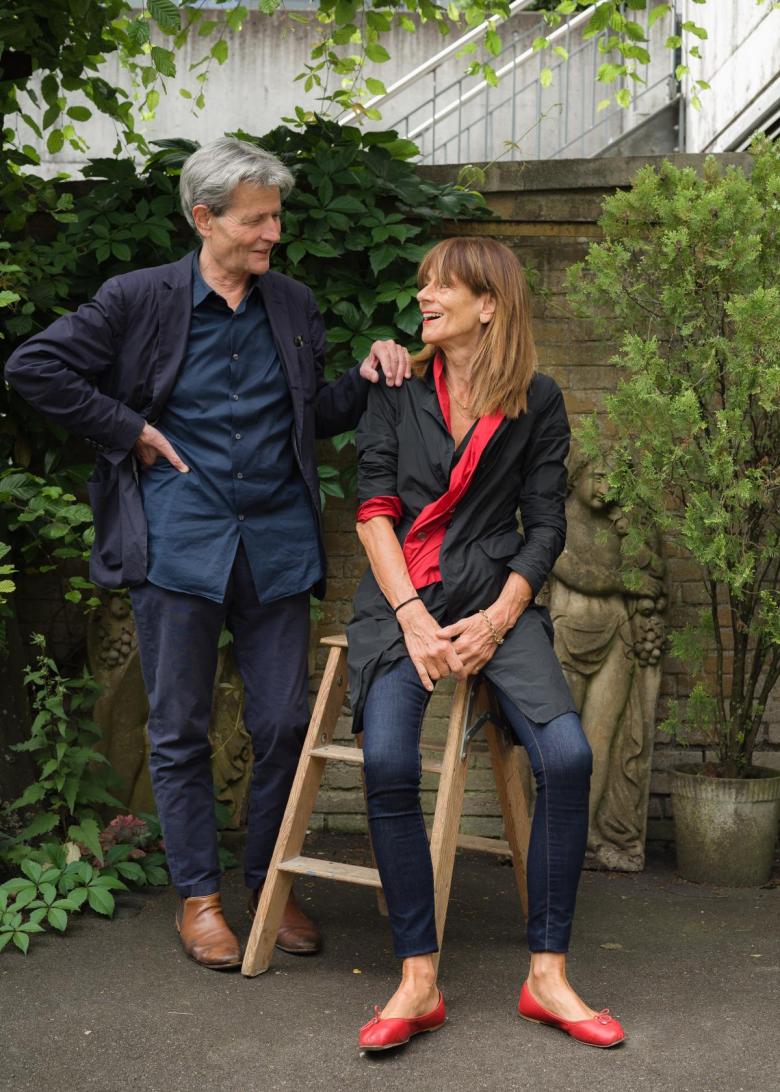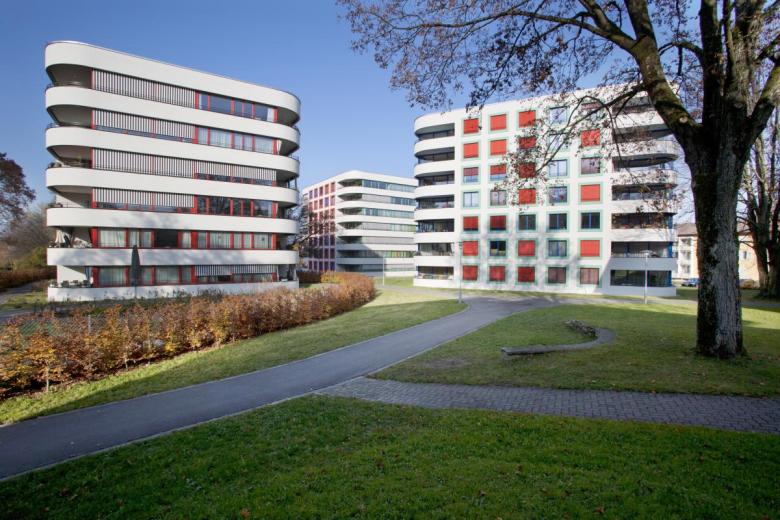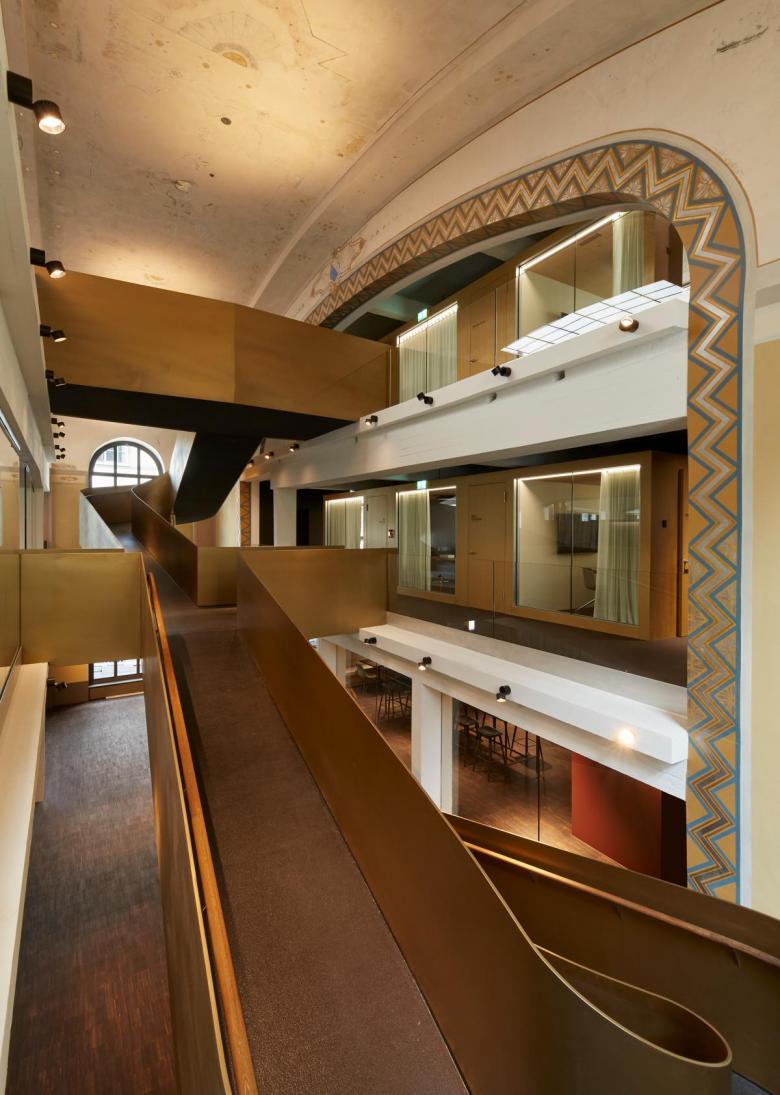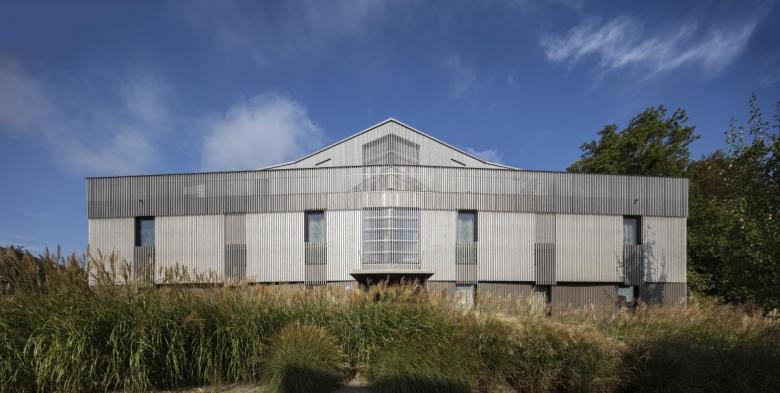Pioneers of modern timber construction
Burkhalter and Sumi Win Prix Meret Oppenheim
Elias Baumgarten
8. February 2024
Christian Sumi and Marianne Burkhalter (Photo: Dennis Yulov)
Marianne Burkhalter and Christian Sumi are deserved laureates of the 2024 Prix Meret Oppenheim in the Architecture category. From the mid-1980s, the duo designed pioneering wooden buildings in an unmistakable language of form and color.
“We have tried to update and modernize timber construction in order to make it architecturally powerful.”
Today, timber construction is booming. In our age of climate crisis, buildings made of wood are being constructed everywhere: residential buildings, kindergartens, schools, and recently even high-rise buildings. Numerous books teach architects how to build with this popular material. This is not surprising, since wood is a regional, renewable raw material and binds CO2. When used correctly, it can also be easily recycled. The material also ensures a comfortable, healthy indoor climate.
Timber was not always so popular. When Marianne Burkhalter and Christian Sumi began designing wooden buildings in the 1980s, they were swimming against the tide. Projects such as their detached house in Langnau am Albis, built in 1986, were a real rarity back then. However, in the years since, the significance of this pioneering building in terms of architectural history has even been recognized by the Federal Supreme Court of Switzerland: In 2021, it forbade the owners from demolishing the listed building with its characteristically curved facades, as the house was “worthy of protection for bearing exemplary witness to architectural advances in timber construction.” Marianne Burkhalter and Christian Sumi have now been awarded the Prix Meret Oppenheim for their pioneering architecture.
Sunnige Hof cooperative housing, Zurich, 2012 (Photo: Heinz Unger)
“Suddenly we were able to envision architecture not just vertically, but also horizontally, in layers.”
Burkhalter and Sumi met in Zurich in 1980. After founding their joint office four years later, they began to develop material-saving constructions made of wood. They were influenced by the debates of the 1970s, when authoritarian structures, outdated role models and conservative values were being questioned, and environmental destruction was also being addressed for the first time. At the same time, the Swiss timber industry was making great technical progress. Burkhalter Sumi came along at just the right time, they recalled years ago during a discussion at the ETH. In 1994, for example, they were commissioned by the city of Zurich to build a forestry station in Rheinau as a wooden modular structure, which was extremely progressive at the time. The complex, which consists of a garage, an administration building and an open hall, is painted bright red, a color that would soon become the duo's trademark: in the kindergarten built in 1994 for the Vorarlberg municipality of Lustenau or the spiral-shaped extension to the Hotel Zürichberg, completed just one year later.
It is remarkable that Burkhalter Sumi have always refrained from showing timber in its natural state, as Marianne Burkhalter said in an interview in 2006. This distinguishes their buildings from many current examples in which wood is left untreated. It is possible that their expressive buildings contributed to the current popularity of timber construction and inspired others to explore the material. The duo's early involvement with adaptive reuse, i.e. the redesign of existing buildings so that they can be preserved, is also a particular achievement: Back in 2019, when working with what was already there was not yet on everyone's lips, as it is today, they converted the Zurich Stadthalle, which had served as a parking garage in the meantime, into an office building for Swiss Tourism.
Renovation of the Stadthalle Zurich, 2019 (Photo: Heinz Unger)
Marianne Burkhalter and Christian Sumi's pioneering projects brought them recognition and appreciation not only in Switzerland, but also abroad, through guest professorships in the United States, Great Britain and Scotland. They also passed on their approach to young architects in Switzerland; from 2008 to 2018, the duo held a joint professorship at the Accademia di architettura in Mendrisio. The pair also took part in numerous exhibitions, gave lectures, conducted research, wrote — about Le Corbusier, Swiss modernism, the Gotthard landscape, and the Citroën DS — and sat on juries. In 2014 and 2018, they took part in the Venice Architecture Biennale.
Wannenholz residential building, Affoltern, 2016 (Photo: Heinz Unger)
Marianne Burkhalter and Christian Sumi have earned this prestigious award for their pioneering architecture and multifaceted, unwavering commitment. Their work demonstrates that some architects have been working on the building revolution for decades without making a big fuss about it. After all, environmental destruction has been an issue since the 1970s and climate change has been warned about since the 1980s.
In 2021, Marianne Burkhalter and Christian Sumi handed over their office to their long-standing partners Yves Schihin and Urs Rinklef, who now run it under the name Oxid Architektur. With projects such as the Casa di Ringhiera residential complex in Bellinzona and the Waldacker housing estate in St.Gallen, which recently came second in our public vote for Swiss Building of the Year, the latter remain true to Burkhalter Sumi's ecological approach.
The Prix Meret Oppenheim will be presented at a ceremony in Basel on June 10. Art historian Jacqueline Burckhardt and artist Valérie Favre — winners in the CPE (Critique Publishing Exhibition) and Art categories, respectively — will also be honored. Switzerland's Federal Office of Culture and the Federal Art Commission are awarding the Swiss Grand Award for Art – Prix Meret Oppenheim for the 24th time this year.



